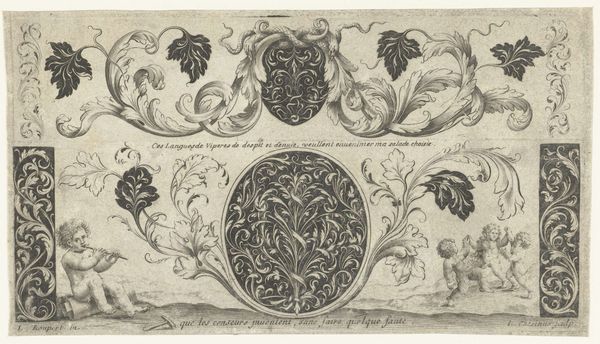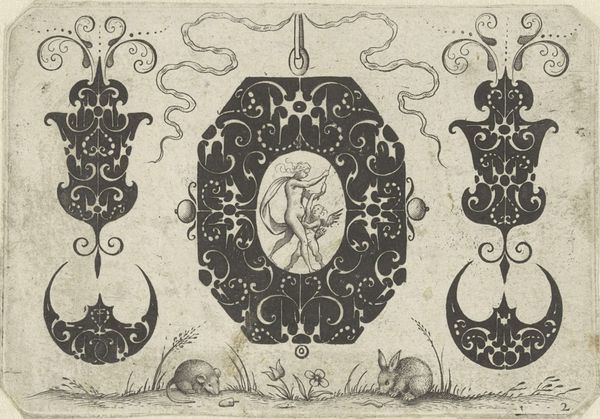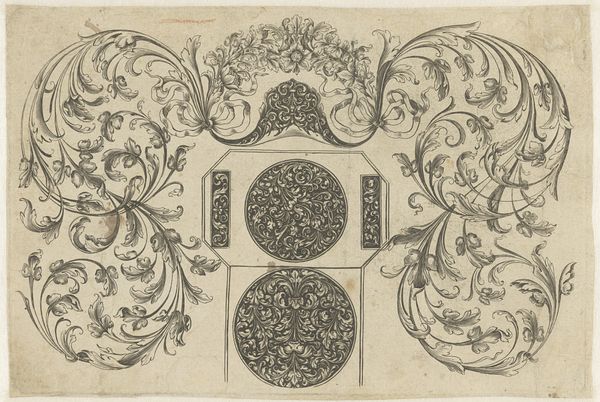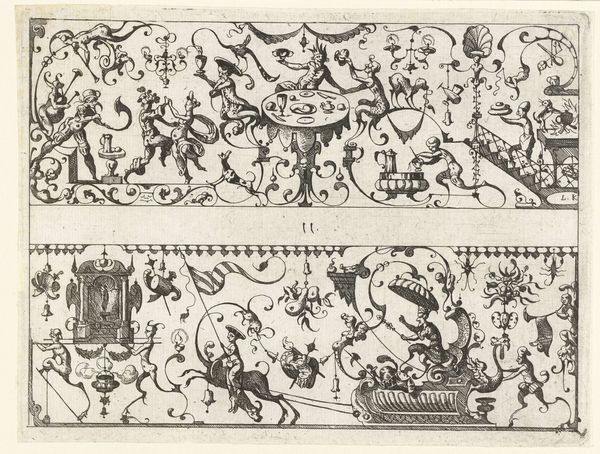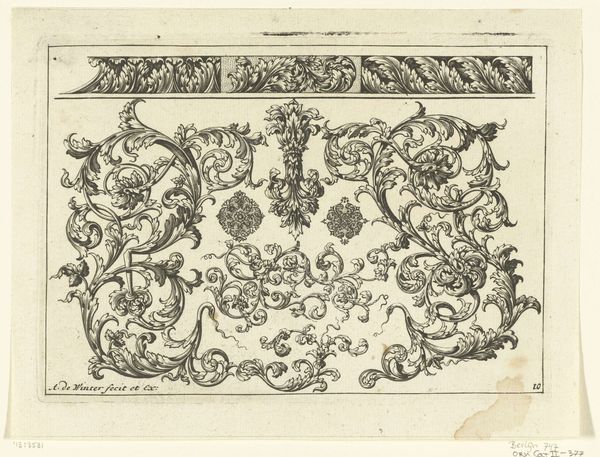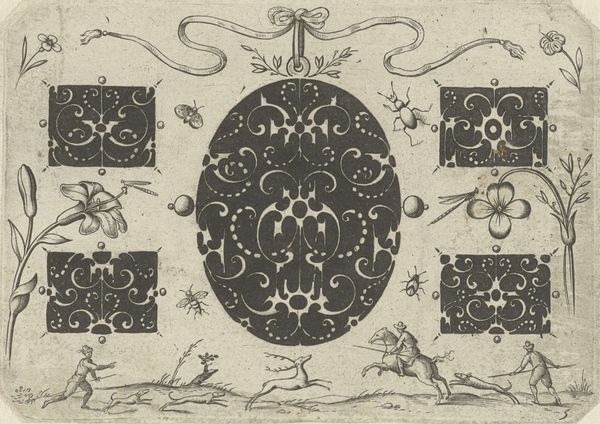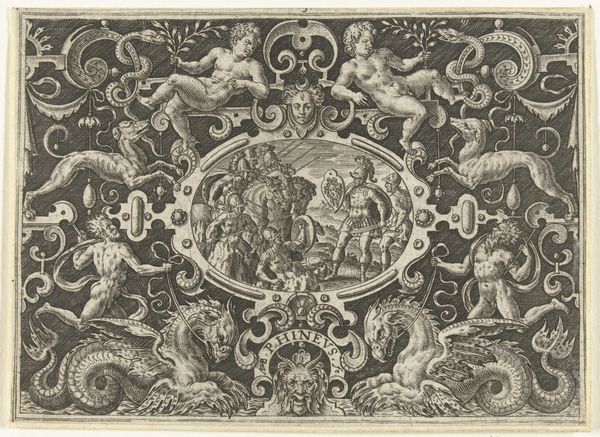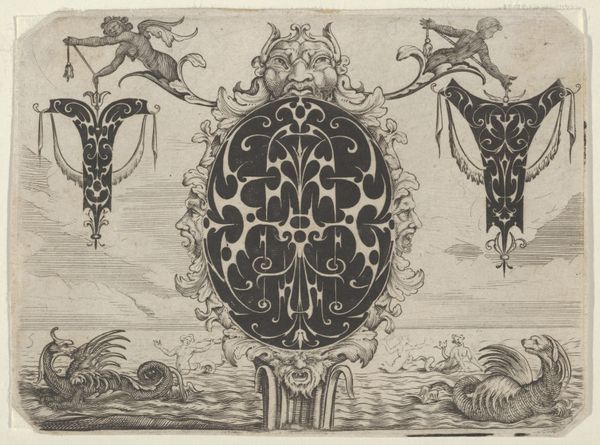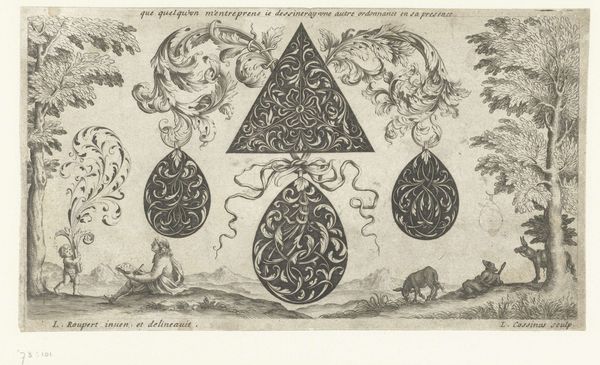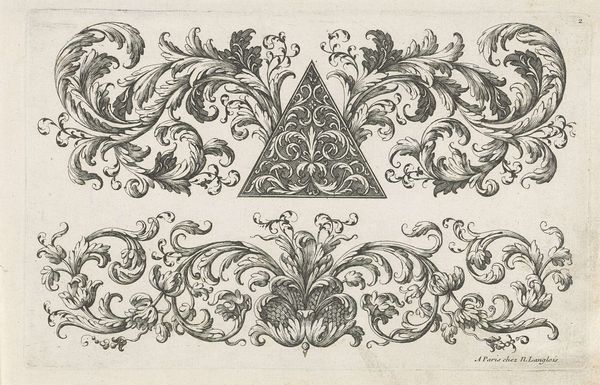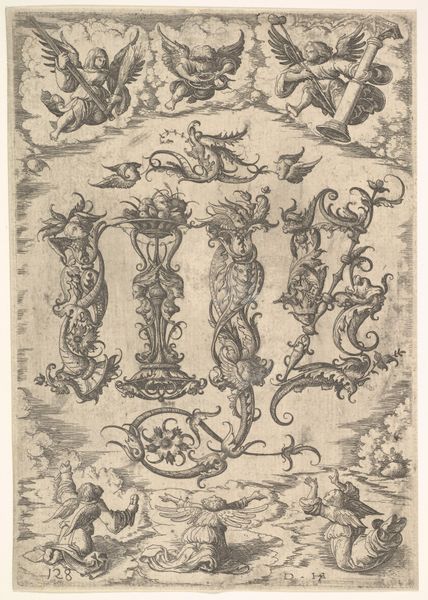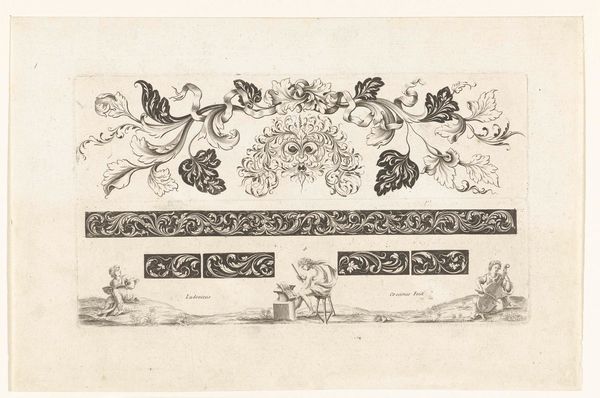
drawing, print, paper, ink, engraving
#
drawing
#
baroque
#
pen drawing
# print
#
pen illustration
#
pen sketch
#
figuration
#
paper
#
ink line art
#
ink
#
pen-ink sketch
#
line
#
pen work
#
sketchbook drawing
#
engraving
Dimensions: height 130 mm, width 209 mm
Copyright: Rijks Museum: Open Domain
Editor: So, here we have "Masker en medaillon geflankeerd door bladranken," created in 1668 by Louis Cossin. It's a pen drawing – almost like a really detailed doodle. The symmetry is striking, and yet… something feels a bit unsettling about it. What jumps out at you when you look at this, in terms of the social or political context? Curator: What immediately grabs my attention is the ornamental function. These types of prints circulated widely, functioning almost like pattern books. Think about the power structures in the 17th century: elaborate decoration signaled wealth and status. Artists like Cossin were essentially fueling that engine, providing designs that would be copied and adapted by artisans working for the elite. The presence of putti also subtly nods to classical ideals, something that patrons of the arts really wanted to associate themselves with, at that time. Editor: Pattern books, that makes so much sense. Were these designs exclusively for the wealthy? Or did their influence trickle down through society? Curator: That’s a good question. Initially, yes, these intricate designs were primarily adopted by the elite, seen in architecture, furniture, even clothing embellishments. However, the very nature of printmaking facilitated wider distribution. While direct replication by less-skilled artisans might result in simplified or altered versions, the essence of the Baroque aesthetic – opulence, dynamism – seeped into the broader visual culture. The professional guilds and artistic academies exerted control over quality and innovation. The dissemination of styles reinforced the prevailing social hierarchies, even in diluted forms. Editor: I never thought about ornament having such a distinct function of social distinction! So, would this engraving be more of a tool for cultural transmission, and less an artwork meant to stand alone, as a statement? Curator: Precisely. This print participates in a visual language used to establish a cultural environment. Though skillfully rendered and visually compelling, it mainly fulfilled the role of a cultural ambassador, and promoter, reflecting and reinforcing power dynamics inherent to 17th century European society. Editor: That gives me a lot to think about. Thanks for showing me this historical context.
Comments
No comments
Be the first to comment and join the conversation on the ultimate creative platform.
